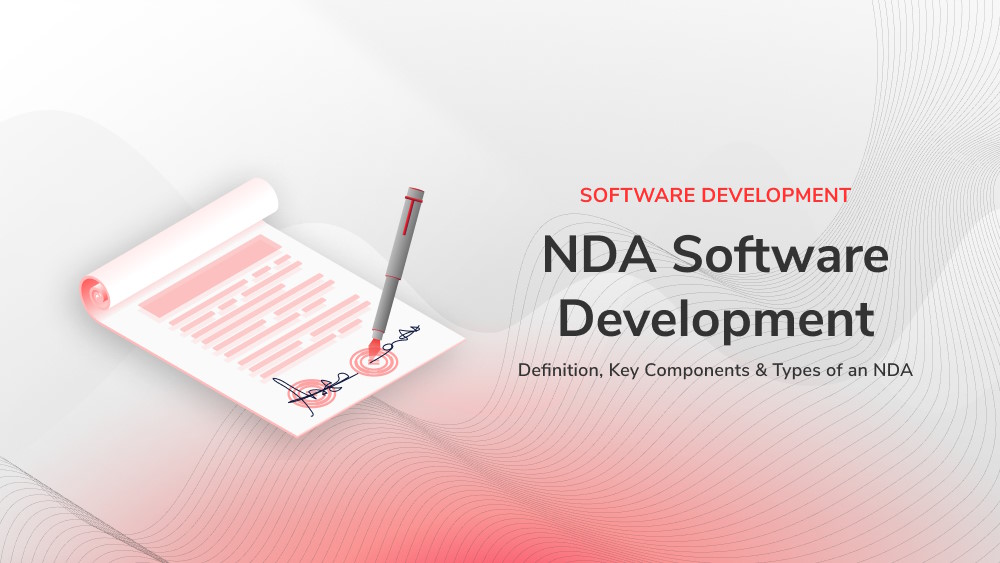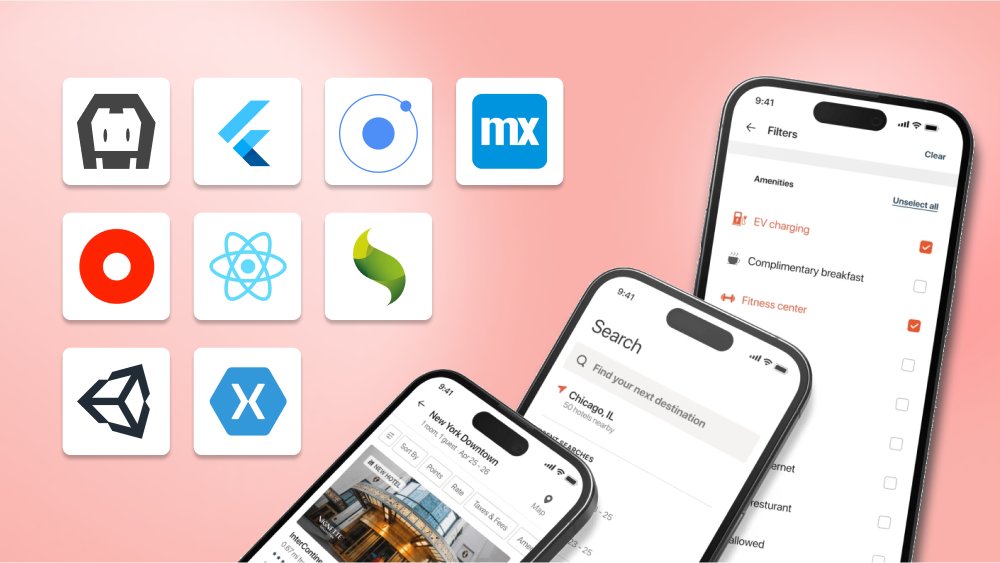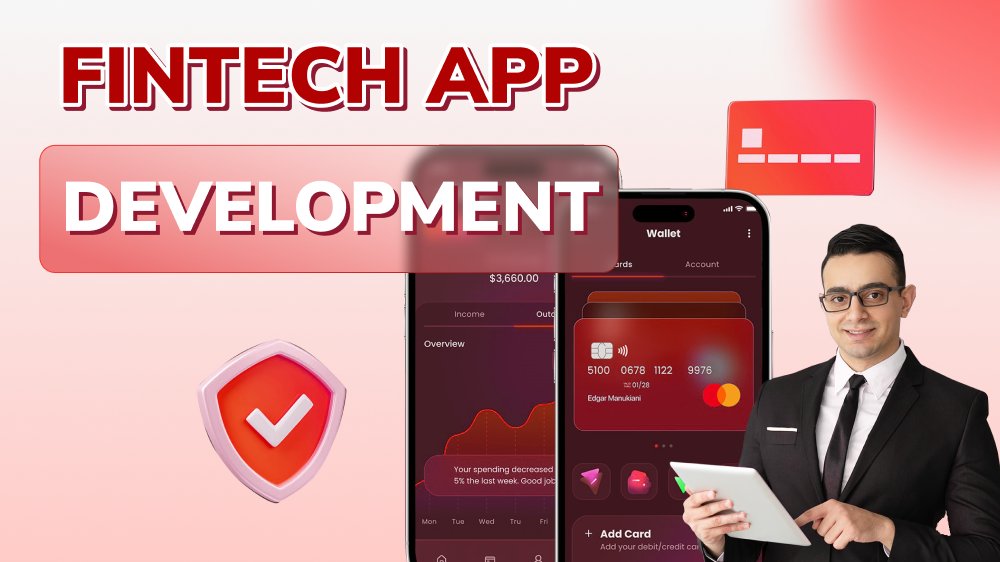NDA Software Development: Definition, Key Components & Types of an NDA

Content Map
More chaptersIn today’s fast-paced digital world, software development has become a critical aspect of many businesses. To protect their intellectual property and confidential information, companies often use non-disclosure agreements (NDAs) when working with third-party developers or contractors.
An NDA is a legal document between two or more parties that outlines the conditions for sharing confidential information. Regarding software development, NDAs are essential for protecting proprietary software code, algorithms, and other trade secrets that might give a competitor an unfair advantage.
In this article, we will provide you with an overview of NDA software development, including its definition, key components, common exceptions, and the types of NDAs typically used in software development projects. Whether you’re a software developer or a product owner looking to protect your trade secrets, understanding the basics of NDA software development can help ensure the confidentiality and security of your sensitive information.
What Is a Non-disclosure Agreement (NDA)?
A non-disclosure agreement (NDA), also known as a confidentiality agreement, is a legal agreement contract between two or more parties that outlines confidential information or trade secrets that the parties wish to share with one another for specific purposes but do not want to be made public or disclosed to third parties.
The NDA establishes a confidential relationship between the parties and legally prohibits the recipient from disclosing or using the confidential information for any unauthorized purpose. NDAs are commonly used in software development partnerships, employment agreements, and when sharing sensitive information with consultants or contractors.
For software development, the non-disclosure agreement represents a confidentiality agreement between a certain customer (a disclosing party) and an outsourcing company or software developer (recipient party) at the beginning of the business relationship. By implementing an NDA for software development, parties can confidently exchange proprietary information while minimizing the risk of unauthorized disclosure or misuse.
For example, suppose a company discusses a new web application with a potential software development partner. In that case, the client may require the service provider to sign an NDA to ensure the information remains private and protected. Violation of a non-disclosure agreement, once signed, such as revealing critical business information for any unauthorized purpose, can result in legal liability or even financial compensation.
3 Typical Types of Non-disclosure Agreements & Their Examples
There are different types of non-disclosure agreements (NDAs) because the context and scope of the proprietary information being shared can vary widely depending on the situation. The type of NDA that is most appropriate will depend on the specific circumstances of the arrangement and the needs of the parties involved. Here are the three typical types of NDA for software development.
Unilateral NDA
A unilateral agreement is a type of NDA that is used when only one party is disclosing confidential information to another party. It is sometimes called a one-way NDA because the obligations to maintain confidentiality are only on one side. In a unilateral NDA for software development, the disclosing party is typically the owner of the information, and the receiving party agrees to keep the information confidential.
- Example 1: By conducting an employment agreement, an employer requires an employee to sign an NDA to protect confidential information, trade secrets, or intellectual property such as source code, customer data, algorithms, etc.
- Example 2: In a consultant agreement, when a company hires a dedicated developer/team to help build billing software development, such outsourcing personnel has to agree to keep the project specifications, business ideas, customer list, or implementation plan information secret.
Bilateral NDA
A bilateral non-disclosure agreement (NDA) is a type of NDA where both parties agree to keep the confidential information of the other party private and confidential. It is sometimes called a mutual NDA because both parties have obligations to maintain confidentiality. By letting both parties agree to keep business information confidential, a bilateral NDA is a good way to foster collaboration, responsibility, and trust with each other.
- Example: In software development, building beta testing is a common practice where early versions of the product are released to a limited group of users for testing and feedback. A bilateral NDA can be used in this situation to ensure that the testers agree to keep any confidential information they may access during the beta testing process confidential, and the product owner, at the same time, does not disclose the personal information of testers to the outside.
Multilateral NDA
When more than two parties are involved in the sharing of confidential information, the proposed NDA for software development is in use. Because of the complexity of this kind of NDA, the roles and obligations of each party are typically defined in more detail than in a bilateral NDA. Specifically, the NDA may specify how the business secret will be shared among multiple parties and how long such parties have to maintain the obligation.
- Example: In some cases, a software product may be developed by a group of contributors who are not affiliated with any specific organization. A multilateral NDA ensures that all persons involved in software development projects agree to maintain confidential and proprietary information with respect during the development process.
What Key Components Should an NDA Include?
Non-disclosure agreements with more components will be stricter and better ensure the interests of both parties. However, a basic NDA for a software development contract must include the following five key components.
Definition of Confidential Information
Not any information exchanged between parties is considered confidential. The definition of confidential information, or what we call the scope of information that is considered confidential and subject to the protection of the agreement, is an indispensable component of an NDA. In this section, project managers need to specifically identify which sensitive information will be required to be kept confidential to avoid ambiguity and potential misunderstandings in the future cooperation process.
Often, confidential information in software development may include but is not limited to internal project structure, algorithms, source code, financial data, marketing plan, customer list, product roadmap, and trade secrets without being publicly known. Since communication forms a collection of various formats, from written documents and electronic files to oral information and visual presentations, make sure you embrace all possible forms to ensure that the party understands its obligation to protect the confidentiality of the information regardless of its format.
An NDA, in some cases, may also include certain types of information that are explicitly excluded from the scope of secret information. Such exceptions may be mentioned in this section or explicitly listed in a separate section entitled exceptions of legal documents.
Parties Involved
NDA for software development is only valid when determining who is involved in this kind of contract. Depending on the type of non-disclosure agreement, the amount of party involvement will vary. In which the disclosing party is the individual or entity that is sharing confidential information with the receiving party, while the receiving party is the individual or entity that is receiving and using the proprietary information for the agreed-upon purpose. Besides the names of the parties involved, this section may also include some subsections, such as proposed collaboration or the goals of the partnership.
For software development, it is recommended that everyone who has access to the internal information of the cooperation process must sign this kind of legal document. This may include all/representative roles of a development team, such as scrum masters, developers, designers, etc.
Obligations of Parties
This is considered the most important section in an NDA since it outlines the specific obligations and usage restrictions that the receiving party must comply with to protect the confidential information of the disclosing party. Each company and each project will have different regulations on information security. Think about all the terms and conditions under which the sensitive information is shared and used. The list of recipient’s obligations and restrictions outlined in an NDA for software should be made as thoroughly as possible. This helps you reduce the chances of the recipient’s company finding vulnerabilities in an NDA and accidentally or intentionally revealing/abusing confidential information in your possession.
This part of an NDA may also specify how the information should be stored, transmitted, and secured to ensure that appropriate safeguards are in place to protect the information from unauthorized access or disclosure.
What about when you are about to end your cooperation with a software development company? Do not forget to add provisions on the return or destruction of confidential information at the end of the agreement to optimize the interests of the disclosing party and avoid a legal settlement. The receiving party may be required to provide evidence of the destruction to the disclosing party if needed.
Agreement Duration
Every contract has a term, and so does a non-disclosure agreement. Agreement duration is a crucial component of an NDA as it specifies how long the NDA will remain in effect and how long the receiving party is obligated to maintain the confidentiality of the information after the termination of the agreement.
Because the nature of each type of software product and business deal is very diverse, there is no fixed stipulation on the contract term. In some cases, an NDA may have a fixed duration, such as one year, two years, or five years. In other cases, the NDA may continue until a specific event occurs, such as the completion of a project or the termination of a business relationship.
Remedies for the Breach of Contract
It is important to note that the obligations outlined in an NDA for software development are enforceable under the law and can have serious consequences for the receiving party if they fail to satisfy their obligations, or what we call a breach of contract.
The remedies available for a breach of an NDA will depend on the specific terms of the agreement and the nature of the breach. Typically, remedies for breach of an NDA include monetary damages, injunctive relief, and specific performance. In which monetary damages are the most common remedy for a breach of an NDA.
In addition to the compensation for leaking the other party’s information, the recipient party, specifically a software development company, can come with additional costs, such as court costs and attorneys’ fees. If the breaching party is found to be in breach of contract, they may be responsible for covering these additional costs.
Remember, a breach of an NDA may result in irreparable harm to the professional reputation of the software development company. Be wise when using confidential information.
3 Common Exceptions to a Software Development NDA
As mentioned above, there are some cases where the recipient party of a non-disclosure agreement (NDA) may be allowed to share confidential information despite the terms of the NDA. These special cases are typically outlined in the NDA itself and are sometimes referred to as “exceptions” to the confidentiality obligation. These exceptions are usually listed specifically in the “Disclosure with Consent” section of the NDA agreement (if have any). Below are some special cases when outsourcing companies may disclose customers’ private information.
Disclosure with Consent
In case the software company (recipient party) needs to share some confidential information with an outside consultant or subcontractor to serve the needs of completing a software development project, the receiving party can completely ask for disclosing party’s consent before doing so. This might involve the recipient party providing details about the third party and the scope of their involvement in the project. Note that the disclosing party reserves the right to refuse consent for sharing such information after careful consideration of the risks involved.
Legal Requirements
When there are legal requirements or court orders to produce confidential information, all the parties are required to comply with the law, although it may go against the terms of the NDA. In addition, it is important to note that the legal requirement exception should not be interpreted too broadly. The recipient party is still responsible for protecting the trade secret, and it limits disclosure to only what is absolutely necessary.
Publicly Available Information
If the information that was considered confidential at the time the NDA for software development was signed became publicly available through no fault of the receiving party, then the NDA may no longer apply to that information. This usually happens when a certain third party who is not bound by the NDA accidentally or intentionally discloses a party’s information through means like word of mouth, newspaper, or online social media.
There are many NDA templates currently appearing on the internet. However, all of them are for reference only because each business has a different business nature and purpose. Instead of depending on them, create your own software development NDA template. Covering all cases of information security will help your company keep the trade secrets that make your business stand out among competitors.







